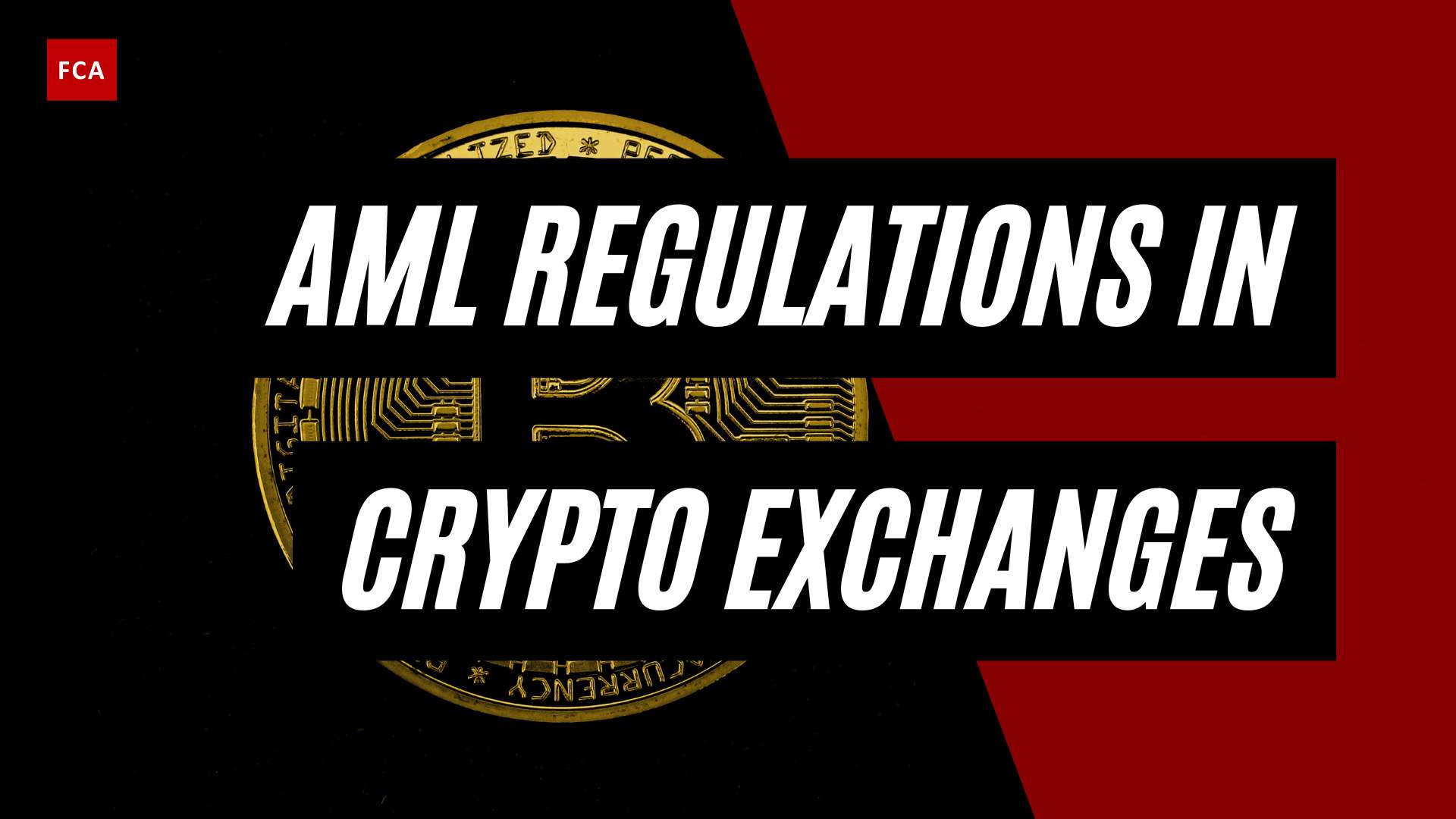Understanding AML Investigations on Blockchain
In the realm of Anti-Money Laundering (AML), the integration of blockchain technology has brought about significant advancements in investigations. This section will provide an introduction to AML investigations and highlight the role of blockchain in this domain.
Introduction to AML Investigations
AML investigations are a crucial aspect of detecting and preventing financial crimes, such as money laundering and terrorist financing. These investigations involve the identification, analysis, and monitoring of suspicious financial activities to ensure compliance with AML regulations and combat illicit transactions.
Traditionally, AML investigations were conducted using manual processes and relied heavily on the analysis of transaction records and customer information. However, with the advent of blockchain technology, new opportunities and challenges have emerged for AML professionals.
Role of Blockchain in AML Investigations
Blockchain technology, characterized by its decentralized and immutable nature, offers several advantages in the context of AML investigations. The transparency and traceability provided by blockchain can greatly enhance the efficiency of these investigations.
By leveraging blockchain, financial institutions can create shared databases for AML purposes, facilitating the secure exchange of information between entities and streamlining the verification of customer identities. This can significantly improve the monitoring of transaction activities, enabling the detection of suspicious behavior or financial crimes (Harvard University). For more information on AML compliance in the blockchain industry, visit our article on AML compliance in blockchain.
Moreover, the immutability of blockchain transactions ensures that once recorded, they cannot be altered or tampered with. This characteristic provides an auditable trail, aiding in investigations and regulatory oversight in combating money laundering and terrorist financing activities (Harvard University). However, it is essential to note that the pseudonymity of Bitcoin transactions can pose challenges in AML investigations on blockchain. Although transactions are not anonymous, they are pseudonymous, and linking the pseudonyms to real-world identities requires additional analysis and techniques (Steptoe). For more information on blockchain applications for AML, refer to our article on blockchain applications for AML.
To effectively conduct AML investigations on blockchain, professionals employ various techniques tailored to this technology. Chain analysis plays a crucial role, allowing investigators to track funds on the blockchain and identify suspicious activities or illicit fund movements. Additionally, behavior-based monitoring and the integration of machine learning and AI can enhance the efficiency and accuracy of investigations. For more information on techniques for AML investigations on blockchain, refer to our article on AML monitoring on blockchain.
In summary, blockchain technology has the potential to revolutionize AML investigations by increasing transparency, traceability, and efficiency in the detection and prevention of financial crimes. By leveraging blockchain’s capabilities and employing appropriate tools and techniques, professionals can enhance their ability to combat money laundering and ensure compliance with AML regulations in this rapidly evolving landscape.
Challenges of AML Investigations on Blockchain
When it comes to conducting AML investigations on blockchain, there are unique challenges that need to be addressed. Two key challenges are the pseudonymity of Bitcoin transactions and the immutability of blockchain transactions.
Pseudonymity of Bitcoin Transactions
One of the challenges faced in AML investigations on blockchain is the pseudonymity of Bitcoin transactions. While Bitcoin transactions are not completely anonymous, they are pseudonymous. This means that transactions are recorded on a public ledger, and the identities of the parties involved are represented by pseudonyms. However, these pseudonyms can potentially be linked to real-world identities through various means (Steptoe).
To overcome this challenge, AML investigators need to employ sophisticated techniques and tools to trace the flow of funds and identify patterns of suspicious activity. Chain analysis, for example, can be used to track funds on the blockchain and provide valuable insights for AML investigations. By analyzing the flow of transactions, investigators can potentially identify illicit fund movements and detect suspicious behavior (Steptoe).
Immutability of Blockchain Transactions
Another challenge in AML investigations on blockchain is the immutability of blockchain transactions. Once a transaction is recorded on the blockchain, it cannot be modified or deleted. While this immutability is one of the strengths of blockchain technology, it poses a challenge for AML investigations that may require freezing accounts or reversing transactions.
To address this challenge, AML investigations on blockchain often focus on following the money and tracking the movement of funds rather than attempting to modify or reverse transactions. By analyzing transaction records and identifying the flow of funds, investigators can gain insights into the movement of illicit funds and potentially uncover money laundering activities (Steptoe).
Despite these challenges, the integration of blockchain technology in AML investigations offers several advantages, such as transparency, traceability, and the potential to strengthen compliance processes. By leveraging blockchain analytics tools and establishing risk and control frameworks, AML investigators can enhance their capabilities in detecting and preventing money laundering and other financial crimes.
Techniques for AML Investigations on Blockchain
To effectively conduct Anti-Money Laundering (AML) investigations on the blockchain, professionals employ various techniques that leverage advanced analytical tools. These techniques help in detecting and preventing illicit financial activities. Three key techniques used in AML investigations on the blockchain are chain analysis for tracking funds, behavior-based monitoring, and the application of machine learning and artificial intelligence (AI).
Chain Analysis for Tracking Funds
Chain analysis is a powerful technique employed in AML investigations to track funds on the blockchain. By analyzing the flow of transactions and tracing their origins and destinations, investigators can gain valuable insights and identify suspicious activity or illicit fund movements. This technique helps in identifying patterns and connections that may be indicative of money laundering or other financial crimes. Chain analysis allows for a comprehensive understanding of the transaction history and can assist in building a strong case when investigating potential illicit activities on the blockchain.
Behavior-Based Monitoring
Behavior-based monitoring is another effective technique used in AML investigations on the blockchain. This technique involves analyzing the behavior and activity patterns exhibited by cryptocurrency users to detect suspicious transactions. By continuously monitoring user behavior, financial institutions and regulators can swiftly detect emerging threats and develop risk management strategies. Behavior-based monitoring relies on the identification of unusual or abnormal transactional behavior, such as sudden large transfers, frequent transfers to high-risk jurisdictions, or patterns inconsistent with typical user behavior. This technique enhances the ability to identify potential money laundering or illicit activities on the blockchain.
Machine Learning and AI in Investigations
Machine learning and artificial intelligence (AI) play a significant role in enhancing AML investigations on the blockchain. These technologies are utilized to analyze vast amounts of data and identify patterns of suspicious activity that might be challenging for humans to detect. By leveraging machine learning and AI algorithms, investigators can develop models that automatically flag transactions meeting specific criteria, thereby enhancing the effectiveness of transaction monitoring on the blockchain. These technologies continuously learn and adapt to new trends and patterns, improving the accuracy and efficiency of AML investigations (Sanction Scanner).
To further enhance AML investigations on the blockchain, various tools are available to professionals in the field. Notabene’s comprehensive suite and Elliptic’s blockchain intelligence tools are some notable examples. These tools provide advanced capabilities to analyze blockchain data, detect suspicious transactions, and assist in investigations. Additionally, other third-party providers offer solutions tailored to the needs of AML professionals, empowering them to effectively combat financial crimes in the blockchain ecosystem.
By employing a combination of chain analysis, behavior-based monitoring, and leveraging machine learning and AI, AML investigators can enhance their ability to detect and prevent money laundering and other illicit activities on the blockchain. These techniques, coupled with the use of specialized tools, contribute to a more robust and effective AML framework in the evolving landscape of digital finance.
Regulatory Considerations for AML Investigations on Blockchain
When it comes to conducting AML investigations on blockchain, there are specific regulatory considerations that need to be taken into account. This section will explore two key aspects: compliance with AML regulations and dealing with decentralization challenges.
Compliance with AML Regulations
AML regulations play a crucial role in ensuring transparency and security within the cryptocurrency industry. They mandate stringent customer due diligence, transaction monitoring, and reporting of any potentially illicit transactions to relevant authorities. Compliance with AML regulations is essential to combatting illicit financial activities within digital assets.
To ensure compliance, organizations conducting AML investigations on blockchain must adhere to the regulations established by relevant authorities, such as Financial Action Task Force (FATF) guidelines and country-specific AML laws. These regulations require the implementation of robust know-your-customer (KYC) procedures, transaction monitoring systems, and suspicious activity reporting mechanisms. By following these regulations, organizations can contribute to the overall integrity of the financial system and help prevent money laundering activities.
Dealing with Decentralization Challenges
Blockchain’s decentralized nature presents unique challenges for AML investigations. Traditional AML frameworks, built for centralized financial systems, may require adaptations to address the distributed model of blockchain. Decentralization can make it difficult to identify and track individuals involved in illicit activities, as transactions on the blockchain are pseudonymous and not tied to real-world identities.
To overcome these challenges, AML investigators must leverage innovative techniques and technologies. One approach is to use advanced analytics and blockchain forensic tools that can analyze transaction patterns, trace funds, and identify suspicious activities. Such tools enable investigators to follow the flow of funds across the blockchain and identify potential money laundering schemes.
Additionally, collaboration between regulatory authorities, financial institutions, and blockchain industry participants is crucial in developing effective strategies to address the unique challenges posed by decentralized systems. By working together, stakeholders can share knowledge, insights, and best practices to enhance AML investigations on blockchain.
By prioritizing compliance with AML regulations and addressing decentralization challenges, organizations can navigate the complexities of AML investigations on blockchain more effectively. These considerations are essential in ensuring the integrity of the crypto industry and preventing illicit financial activities.
Benefits of Blockchain in AML Investigations
Blockchain technology has the potential to transform anti-money laundering (AML) investigations, offering numerous benefits to enhance the efficiency and effectiveness of compliance processes in the financial sector. Let’s explore two key advantages of leveraging blockchain in AML investigations: transparency and traceability, and strengthening compliance processes.
Transparency and Traceability
One of the significant benefits of utilizing blockchain technology in AML investigations is the increased transparency and traceability of financial transactions. Blockchain creates an immutable and auditable trail of transactions, enabling a comprehensive view of the entire transaction history. Every transaction recorded on the blockchain is transparently visible to all participants, making it difficult for bad actors to hide illicit activities.
The transparency provided by blockchain technology allows investigators to trace the flow of funds and identify any suspicious or fraudulent transactions more efficiently. This enhanced visibility helps in identifying patterns, detecting money laundering schemes, and preventing the misuse of financial systems.
Strengthening Compliance Processes
Blockchain technology can significantly strengthen compliance processes in AML investigations. By leveraging blockchain-enabled AML solutions, financial institutions can create shared databases for AML purposes, facilitating the secure exchange of information and collaboration between institutions. This shared database approach enhances the effectiveness of AML investigations by enabling real-time access to comprehensive and up-to-date information.
Moreover, the integration of blockchain technology streamlines the verification of customer identities and the monitoring of transaction activities. Blockchain allows for the creation of a decentralized identity system, providing a more secure and tamper-proof method of identity verification. This helps in reducing identity fraud risks and enhances the accuracy of customer due diligence processes.
In addition, blockchain-enabled AML investigations can leverage smart contracts and automated compliance protocols to ensure that transactions are executed in compliance with AML regulations. Smart contracts can be programmed to enforce predefined rules and trigger alerts or flags when suspicious activities are detected.
By embracing blockchain technology, AML investigations can benefit from increased transparency, improved traceability, and strengthened compliance processes. These advancements contribute to more effective measures in combating money laundering, terrorist financing, and other financial crimes.
To effectively leverage blockchain in AML investigations, various blockchain and AML software tools are available in the market. These tools provide advanced analytics, monitoring capabilities, and risk scoring criteria to enhance the investigation process further. In the next section, we will explore some of these tools and techniques used in AML investigations on the blockchain.
Tools for AML Investigations on Blockchain
When it comes to conducting AML investigations on blockchain, various tools and platforms are available to assist professionals in compliance, risk management, and anti-money laundering efforts. These tools leverage the capabilities of blockchain technology to enhance the efficiency and effectiveness of AML investigations. Here are three notable options:
Notabene’s Comprehensive Suite
Notabene offers a comprehensive suite of tools designed to provide a holistic view of Virtual Asset Service Providers (VASPs) and their regulatory compliance within the blockchain ecosystem. Their suite emphasizes a global perspective on AML compliance, taking into account the regulatory environment surrounding VASPs. Notabene’s tools enable professionals to navigate the complex landscape of blockchain transactions and regulatory requirements, facilitating efficient AML investigations and ensuring compliance with AML regulations.
Elliptic’s Blockchain Intelligence Tools
Elliptic is a leading provider of blockchain intelligence tools that cover a wide range of virtual assets across major blockchains and cryptoassets. Their tools enable faster and more accurate decision-making, reducing investigation times and addressing crypto-related crimes (Elliptic). With comprehensive coverage of more than 550 virtual assets, Elliptic’s tools assist professionals in law enforcement agencies, regulators, financial institutions, and cryptoasset businesses to quickly uncover evidence of crypto crimes and trace criminal activities across various chains and currencies.
Elliptic’s blockchain investigation tools offer powerful features to enhance the efficiency and outcomes of investigations related to cryptocurrency crimes. By providing reliable intelligence and uncovering complex crypto crimes hidden in data, these tools empower professionals to make informed decisions rapidly and strengthen cases with solid evidence.
Other Third-Party Providers
In addition to Notabene and Elliptic, there are various other third-party providers offering tools and platforms specifically designed for AML investigations on blockchain. These providers offer a range of features, including blockchain analytics, transaction monitoring, and risk scoring criteria. Some notable providers in the industry include but are not limited to:
These third-party providers offer solutions that cater to the unique challenges of AML investigations on blockchain. By leveraging the power of blockchain technology and advanced analytics, professionals can enhance their investigations, detect suspicious activities, and strengthen their compliance processes.
When choosing a tool or platform for AML investigations on blockchain, it’s important to consider factors such as the provider’s reputation, the comprehensiveness of their offerings, and their ability to address the specific needs of your organization. Carefully assessing and selecting the right tools can significantly improve the effectiveness and efficiency of AML investigations in the context of blockchain transactions.
Enhancing AML Investigations on Blockchain
To effectively conduct AML investigations on blockchain, it is essential to implement strategies that enhance risk assessment, utilize specialized tools, and establish clear criteria for risk scoring. By doing so, organizations can strengthen their anti-money laundering efforts and better combat financial crimes involving crypto assets.
Establishing Risk and Control Frameworks
Firms involved in blockchain investigations must establish a comprehensive risk and control framework. This framework should outline the protocols and procedures for identifying, assessing, and mitigating risks associated with transactions on the blockchain. It is crucial to define the risk appetite and determine whether indirect transactions on the blockchain should be subjected to further investigation or action (LinkedIn).
By clearly defining risk thresholds, organizations can better prioritize investigations based on the level of risk posed by specific transactions. The risk and control framework should be regularly reviewed and updated to adapt to the evolving nature of blockchain technology and emerging money laundering techniques.
Utilizing Blockchain Analytics Tools
Utilizing specialized blockchain analytics tools is crucial to enhance the efficiency and effectiveness of AML investigations on the blockchain. These tools enable investigators to analyze transaction patterns, detect suspicious activities, and trace the flow of funds across the blockchain.
Organizations can choose between building their own in-house analytics tools or leveraging third-party providers (LinkedIn). The level of tooling required depends on the organization’s specific needs and resources. These tools utilize advanced algorithms and data analysis techniques to identify irregularities, detect potential money laundering patterns, and provide actionable insights for investigators.
Setting Risk Scoring Criteria
To facilitate efficient AML investigations on the blockchain, organizations need to establish clear risk scoring criteria. Risk scoring criteria help determine the level of risk associated with different types of blockchain transactions and guide investigators in prioritizing their efforts. By setting thresholds for escalating alerts and investigations, organizations can focus their resources on high-risk activities and entities.
When establishing risk scoring criteria, organizations should consider factors such as the type of blockchain, transaction volume, counterparty risk, and the presence of red-flag indicators. The criteria should be regularly reviewed and updated to reflect the evolving landscape of money laundering techniques and emerging risks associated with blockchain technology.
By enhancing AML investigations on the blockchain through the establishment of risk and control frameworks, utilization of specialized blockchain analytics tools, and the setting of risk scoring criteria, organizations can strengthen their ability to detect and prevent financial crimes. These measures contribute to the broader efforts of combating money laundering and maintaining compliance with AML regulations (Unit21).
The Importance of AML Investigations
Anti-Money Laundering (AML) investigations play a crucial role in combating illicit financial activities and safeguarding the integrity of the global financial system. Understanding the impact of money laundering and the relevant legislation and regulations is essential in highlighting the significance of AML investigations.
Impact of Money Laundering
Money laundering is a complex process that involves disguising the origins of illicitly obtained funds to make them appear legitimate. The consequences of money laundering are far-reaching and detrimental to society as a whole. Consider the following:
-
Economic Consequences: Money laundering undermines the stability and integrity of financial systems, erodes public trust, and hinders economic development. The yearly amount of money laundered is larger than the annual GDP of Russia, Canada, or Italy. This staggering figure illustrates the magnitude of the problem and emphasizes the need for robust AML measures.
-
Funding Criminal Activities: Money laundering provides criminals with the means to finance various illegal activities, including drug trafficking, terrorism, human trafficking, corruption, and organized crime. By effectively investigating and preventing money laundering, authorities can disrupt these illicit networks and mitigate the harm they cause to individuals and communities.
-
Undermining Financial Institutions: Money laundering poses significant risks to financial institutions. Institutions that inadvertently facilitate money laundering activities can face severe penalties and reputational damage. Implementing effective AML investigations helps protect financial institutions from becoming unwitting accomplices in money laundering schemes.
AML Legislation and Regulations
To combat money laundering effectively, governments and regulatory bodies have enacted comprehensive AML legislation and regulations. These measures ensure that financial institutions and other entities adhere to stringent compliance requirements. Key points to consider include:
-
BSA and KYC Compliance: The Bank Secrecy Act (BSA) and Know Your Customer (KYC) regulations are fundamental components of AML compliance. Financial institutions are obligated to establish and maintain comprehensive programs that verify the identity of customers and monitor their transactions. Non-compliance with AML regulations can result in severe penalties for financial institutions, even if the involvement in money laundering activities is unintentional (Unit21).
-
Preventing Money Laundering: AML legislation places a legal obligation on financial institutions to implement robust AML programs, conduct risk assessments, and establish internal controls for detecting and reporting suspicious activities. These measures ensure that institutions are actively engaged in detecting and preventing money laundering, thereby protecting the integrity of the financial system.
-
International Cooperation: AML regulations encourage international cooperation among regulatory bodies and financial institutions to combat cross-border money laundering. This collaboration is vital in detecting and disrupting complex money laundering schemes that span multiple jurisdictions. With the global nature of money laundering, international coordination is essential for effective AML investigations.
By understanding the impact of money laundering and the legal framework surrounding AML investigations, it becomes evident that these investigations are crucial in preventing financial crimes, protecting the financial system, and upholding the integrity of institutions. Robust AML investigations serve as a deterrent to money laundering activities and contribute to a safer and more transparent financial environment.
The AML Investigation Process
Conducting effective Anti-Money Laundering (AML) investigations is crucial to safeguarding financial institutions from illicit activities. The AML investigation process involves several key steps, including triggering suspicion, analyzing customer activity, and filing Suspicious Activity Reports (SARs).
Triggering Suspicion
AML investigations are initiated when suspicious activities are detected. These activities may include cashing a series of large checks, wiring money to blacklisted countries, conducting business in high-risk money laundering jurisdictions, or appearing in leaked documents like the Pandora Papers (Unit21). Financial institutions utilize sophisticated monitoring systems and algorithms to identify such red flags and generate alerts for further investigation.
Analyzing Customer Activity
Once suspicion is triggered, AML investigators dive deeper into the customer’s activity. They revisit the customer’s profile, establish a baseline of normal behavior, and assess any deviations from this baseline. By analyzing transaction patterns, amounts, frequency, and counterparties involved, investigators can identify potential money laundering schemes or other illicit activities.
AML investigations on blockchain may require direct outreach to the exchange or entity where the funds were sent, even if the funds have been commingled with other funds (Steptoe). Due to the immutability of blockchain transactions, freezing accounts or reversing transactions is often not possible. Instead, investigators focus on following the money and tracking the movement of funds.
Filing Suspicious Activity Reports
Once the investigation reveals substantial evidence of suspicious or potentially criminal activity, AML investigators are responsible for filing Suspicious Activity Reports (SARs). SARs are confidential reports submitted to relevant authorities, such as financial intelligence units, to alert them of suspicious transactions that may indicate money laundering, fraud, or other illegal activities.
SARs provide detailed information about the suspicious activity, including the individuals or entities involved, their transaction history, and any supporting documentation. Filing SARs is a critical step in reporting and combating financial crimes, ensuring that appropriate authorities have the necessary information to conduct further investigations and take appropriate action.
The AML investigation process requires expertise in identifying potential financial crimes, conducting thorough analyses, and complying with regulatory requirements. By following this structured process, financial institutions can contribute to the global efforts in combating money laundering and protecting the integrity of the financial system.








